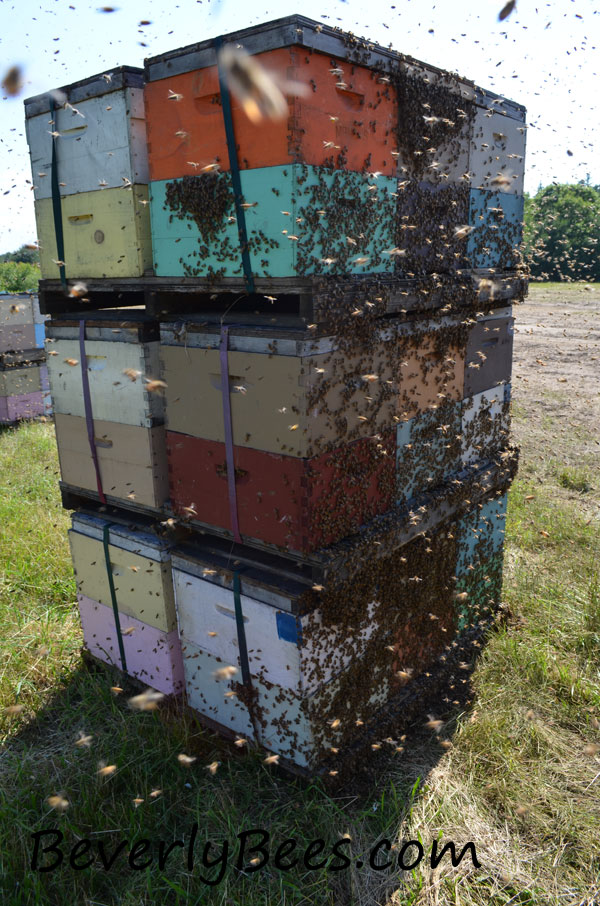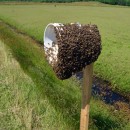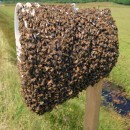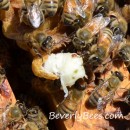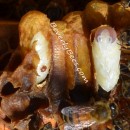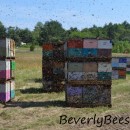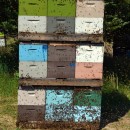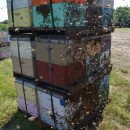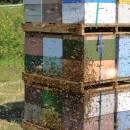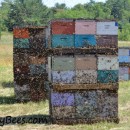Inspecting Commercial Bees on Cranberries
I can make the big announcement because now it’s official! I have been hired by the state of Massachusetts to be the Bee Inspector for Essex County. This job will be fascinating as I get to see honey bees in all types of situations, help out fellow beekeepers and observe many different management styles. Plus, you all know how much I love bees, so what could be better than hanging out with bees all day long!
As my first foray into inspecting, I spent a day with the state inspector going through large-scale commercial bees pollinating the cranberry bogs in MA. The cranberries were just starting to come into bloom and most of the bees had been there for less than a week. These bees live and work hard and are responsible for feeding the mouths of everyday Americans. Without them we would have a pollination crisis and our food supply would dwindle. The state inspector and I visited three yards and inspected some 40 plus hives.

Two yards we visited had swarms. Can you spot the swarm in this picture? It’s small and hard to see but there.

Here is a close up picture of the swarm. The queen was walking around the outside and easily visible. You can see her in the gallery pictures below and also in the video at the end of this article when I zoom in.

We took alcohol washes to check for varroa mites. Varroa mites are harmful to bees and a bane to beekeepers just about everywhere. Alcohol washes are a great way to get an accurate mite count on your hive and work much better than doing screen bottom board mite drop counts. I will demonstrate how to do them in the future, but basically you take a quarter cup of bees and wash them in alcohol using a special screen. You drain the alcohol through a coffee filter and count the mites. More than 5 mites in a quarter cup of bees indicates a threshold where you may want to do something for them, if that is how you manage your bees. You can see a red varroa mite on some drone brood in this picture.

Here is another apiary we visited. We did not inspect these hives that day, since the bees were very active and we did not want to start a robbing frenzy. Plus, we didn’t bring a ladder to reach the top of those pallets (just kidding). These commercial bees will be unstacked and easier to inspect soon, so we will be going back shortly to see them.
Without gloves I only got stung 4 times (there’s nothing like a little apitherapy on the job) which I think is pretty good for the number of bees we looked through. Most of the bees had a fairly good temperament.
The video below is a minute long compilation of scenes from different yards. So many bees were flying and the air is so thick with bees, I had a hard time seeing through my veil and camera. The bees in this last apiary had a strong disdain for my camera and stung it quite a bit, and my hands along with it (3 stings were from here). Although they did not hate my camera nearly as much as Dee Lusby’s bees. Click this link to read about Dee’s bees in Arizona.
All in all it was a very interesting day to say the least. To see more pictures click on the gallery below. Just click on any picture and the gallery will open, then click the pictures to scroll through the gallery. Click the x in the upper left hand corner and the gallery will close. If you are reading this in a reader or by email you may have to view it on my website for the gallery to display correctly. Enjoy!
To be notified of new posts, beekeeping tips and more, sign up for our email newsletter here.


